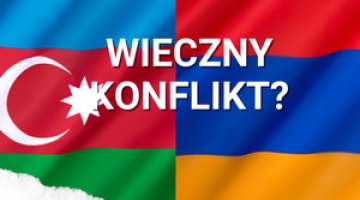Armenia’s agreement with the EU – Yerevan pretends to conduct a multivectoral policy
Armenia and the EU signed a Comprehensive and Enhanced Partnership Agreement (CEPA) during the Eastern Partnership summit in Brussels on 24 November. The document envisages the intensification of political dialogue and the enhancement of trade and economic co-operation (for example, in the areas of transport, energy and investment climate) and support for Armenian civil society. It also provides for the possibility of liberalising the visa regime. Furthermore, Armenia will be able to receive financial assistance from the EU (it is known that this will be around 160 million euros to 2020). Pursuant to the agreement, the parties will co-operate on the closing and decommissioning of the Metsamor nuclear power plant. Armenia has undertaken to discontinue using the proprietary name cognac (also in other alphabets) and to refer to its products as brandy; this provision will begin to apply 14 years after the agreement enters into force (the value of exports of strong alcoholic drinks reached US$148 million in 2016, which accounted for 8.3% of total Armenian exports). Armenia’s total trade volume in 2016 reached US$5.057 billion, where trade with European Union member states was worth US$1.22 billion, and US$1.37 billion with Russia.
Commentary
- Armenia, under Russian pressure, withdrew from signing an association agreement analogous to those the EU has been signing with Georgia, Moldova and Ukraine, ahead of the Eastern Partnership summit in Vilnius in autumn 2013, so that it would be free to embark on accession to the Moscow-controlled Customs Union and Eurasian Economic Union (EAEU) some time later. The formula of the present agreement – the first to be signed between the EU and an EAEU member state – takes this into account. It does not envisage the creation of a free trade zone and establishes a weaker connection between Yerevan and Brussels than was the case with Tbilisi, Chisinau and Kyiv (this is a ‘partnership’ not ‘association’ agreement).
- The fact that the agreement has been signed does not mean that Armenian foreign policy will change. It is very likely that Yerevan continued to consult the agreement with Moscow until the last moment, one proof of which is the visit calendar: on 16 November, President Serzh Sargsyan visited Moscow, where he met with Vladimir Putin, and on 21 November the Russian Minister of Foreign Affairs, Sergey Lavrov, visit Yerevan. Officially, Russia neither opposed nor supported the agreement, while a section of the Russian media has criticised it severely, treating it as ally’s ‘betrayal’.
- Building closer formally contacts with the EU meets the expectations of a large section of the Armenian public who are increasingly open to the West and whose attitude towards Russia is increasingly ambivalent. According to a survey conducted in spring 2017 as part of a project financed by the EU covering Eastern Partnership states, 48% of respondents have a positive attitude towards the EU, 37% have a neutral attitude and 5% have a negative attitude. In turn, according to the a survey conducted by the Yerevan Centre for Globalisation and Regional Co-operation the results of which were announced in September 2017, 34% of respondents view Russia as Armenia’s ally, 30% are of the opposite opinion, and 35% believe that Russia is only partly an ally. It cannot be ruled out that, in the government’s intention, the partnership agreement is intended to serve as a counterweight in propaganda terms the possible concessions to Russia over the Nagorno-Karabakh issue (surrendering part of the occupied territories to Azerbaijan in accordance with the ‘Lavrov plan’).





